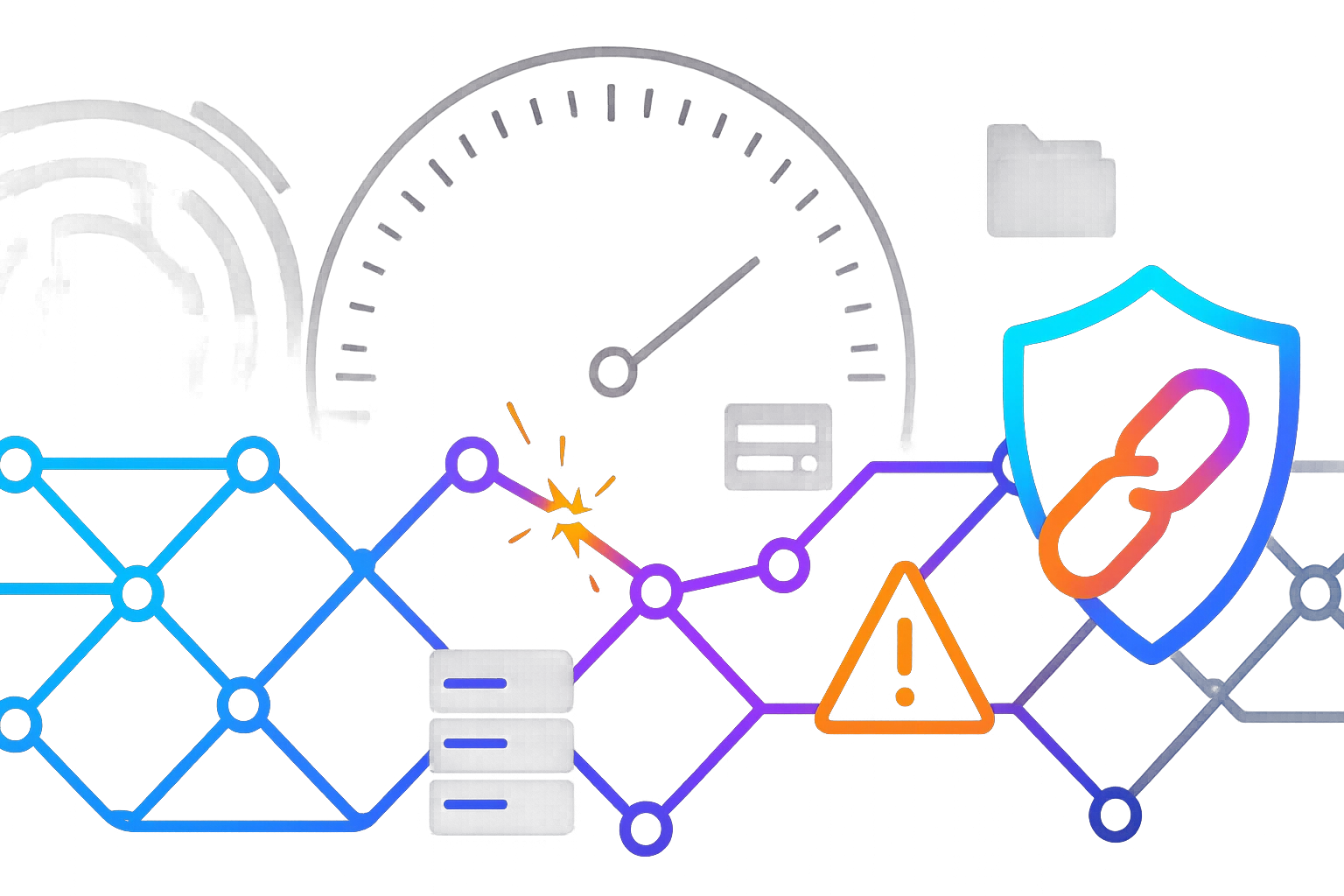Operation Cronos hit LockBit’s core in 2024, but the ransomware economy adapted; here’s what that means for your risk and defenses in 2025—short and practical.

Operation Cronos recap: what law enforcement actually disrupted
Timeline of the takedown and seizures
Operation Cronos was a coordinated law enforcement action in early 2024 that targeted LockBit’s core infrastructure and operators. Authorities seized servers, replaced public-facing sites with notices, and publicized indictments against alleged members. Decryption material and internal data recovered during the operation supported victim notifications and ongoing investigations.
What survived affiliates builders and mirrors
RaaS ecosystems rarely vanish overnight. Cronos hit LockBit’s brand assets and coordination hubs, but affiliates, contacts, and leaked builders persisted. Mirrors and smaller backups surfaced, and some actors pivoted to other platforms. The result: visibility into “official” LockBit activity increased briefly, but the market reabsorbed displaced affiliates into rival RaaS or freelance operations.
Why takedowns disrupt but dont erase raas
RaaS is modular. Core operators manage branding, escrow, and tooling, but affiliates perform intrusion work. When the brand is disrupted, affiliates shop for alternatives or run independent variants. Leaked builders and shared TTPs lower switching costs. Law enforcement pressure increases friction and risk for attackers, but the broader ransomware supply chain remains resilient.
LockBit’s post-Cronos footprint in 2025: brand, code, and copycats
Forks and rebrands leveraging leaked builders
LockBit builders leaked before Cronos, and code-level knowledge spread across underground circles. Post-Cronos, forks and rebrands leveraged similar encryption logic, configuration patterns, and communication styles. While not all forks are credible, the tooling lowered barriers for less skilled actors to claim “LockBit” lineage.
Affiliate migration to rival raas
Affiliates value uptime, payouts, and support. After Cronos, many migrated to rival RaaS with established leak sites and payment rails. This shifted some LockBit-style TTPs into other brands, blurring attribution. The net effect for defenders: a broader distribution of LockBit-like techniques across multiple groups.
Signal vs noise in claimed lockbit attacks
Not every “LockBit” extortion note is authentic. Impostors recycle branding to boost perceived credibility. Without law enforcement confirmation or strong technical linkage, assume mixed signal. Focus on impact and response requirements, not the name on the ransom note.
Implications for organizations: risk level and likely attack patterns
Sectors at heightened risk in 2025
Critical manufacturing, healthcare, professional services, and municipal services remain attractive targets due to time-sensitive operations and third‑party dependencies. Education and small utilities also face steady pressure, often via managed service providers (MSPs) or vulnerable gateways.
Initial access vectors still favored
Expect continued reliance on: phishing and malicious attachments (T1566), valid accounts from credential reuse (T1078), unpatched edge services (T1190), and remote services like RDP/VPN with weak MFA (T1133). Supply-chain footholds via MSPs or software updates persist where monitoring is thin.
Data theft and extortion over encryption only
Double extortion remains standard. Actors prioritize quiet data staging and exfiltration (T1041) before or instead of mass encryption. Pressure tactics include listing victims on leak portals, direct outreach to customers, and threats of regulatory notification.
Implications for individuals: scams, leaks, and identity exposure
Phishing and impostor shakedowns using the lockbit name
Scammers send emails or DMs claiming “LockBit” involvement and demand crypto to “avoid a leak.” Most are impostors. Do not pay. Report and follow official guidance. Organizations should brief staff and customers to expect such contact and route it to security teams.
Data resurfacing on mirrors and resale markets
Even after a takedown, stolen data can resurface via mirrors and resale markets. Old breaches get repackaged. Individuals may see recurring credential-stuffing attempts and targeted phishing using recycled data. Keep unique passwords and enable MFA across services.
Personal security hygiene that reduces exposure
- Enable MFA everywhere possible, with app-based or hardware keys preferred.
- Use a password manager; rotate passwords exposed in past breaches.
- Freeze your credit where available; monitor financial and medical statements.
- Be skeptical of urgent payment or crypto requests; verify via known channels.
Red flags to monitor in 2025: TTPs, lures, and infrastructure shifts
Emerging lure themes and social engineering trends
- Fake regulatory notices or “security updates” referencing recent takedowns.
- Service desk impersonation targeting MFA fatigue or push-bombing (T1621).
- Vendor invoice corrections or payroll change requests near month end.
- Cloud-sharing links delivering malware via living-off-the-land macros or scripts (T1204).

Infrastructure telltales domains bulletproof hosts and tor
Expect churn across disposable domains, bulletproof hosts, and Tor-based comms. Avoid chasing specific indicators; instead, baseline outbound traffic, restrict egress where possible, and log unusual protocol use from user subnets.
Detection cues mapped to mitre attck
- T1566 Phishing: spikes in lookalike domains and attachment delivery attempts.
- T1190 Exploit public facing app: anomalous 401s/403s followed by successful admin sessions.
- T1078 Valid accounts: off-hours logins from atypical ASNs; MFA prompts denied repeatedly.
- T1059 Command and scripting: PowerShell or WMI from non-admin workstations.
- T1041 Exfiltration: steady outbound to new destinations, compressed archives leaving after hours.
- T1486 Impact encryption: mass file renames and extension bursts; backup deletion attempts.
Coordinate these cues with your incident playbooks and the defense priorities below.
Defense priorities that matter now: controls with real impact
Prioritized controls for small and mid sized teams
- MFA everywhere, especially for email, VPN, remote admin, and cloud consoles.
- Patch internet-facing services fast; maintain an asset inventory and automate updates.
- EDR with alert triage and containment; tune for script abuse and credential theft.
- Centralized logging with 30–90 day retention; alert on the detection cues above.
- Least privilege: remove local admin, rotate service accounts, and use just-in-time access.
Backups segmentation and edr that actually help
- Backups: 3 2 1 strategy with at least one immutable or offline copy; test restores monthly.
- Segmentation: break flat networks; limit east west traffic; restrict SMB and RDP laterally.
- EDR: enable tamper protection; block execution of unsigned binaries in sensitive paths.
- Mail security: harden SPF DKIM DMARC; strip risky attachments; sandbox links.
Supplier risk MFA and contract language that bites
- Require MFA and logging for MSP access; review privileged pathways and jump hosts.
- Contract clauses: minimum security controls, 24h breach notice, incident cooperation, and audit rights.
- Third party monitoring: verify patch cadences, backup posture, and compromise notification workflows.
Tie these actions to your detection cues and to the reporting expectations in the next section.
Legal and reporting landscape after Cronos: what changes for victims
When and how to report CERTs regulators and insurers
Authorities emphasize early reporting, even if details are incomplete. Early contact improves the chance of decryption assistance and investigative insight. Insurers increasingly require timely notification and evidence preservation.
Mini checklist by region
- United States: Report to CISA and FBI IC3. Notify sector ISACs where applicable.
- United Kingdom: Report to NCSC. Engage local police as directed by NCSC guidance.
- European Union: Contact your national CERT; consult ENISA guidance for coordination.
- Global: Use your national CERT or cybercrime reporting portal; inform regulators if data protection laws require it.
Links are provided in References. Coordinate with counsel on regulatory timelines and cross-border notifications.
Pay no pay considerations without legal risk
Payment decisions are complex and jurisdiction-specific. Some payments risk violating sanctions or enabling criminal enterprises. Consult legal counsel and law enforcement before any decision. Consider alternatives: restoration from backups, partial service degradation, and customer communications. Even if paying, data deletion promises are not verifiable.
Preserving evidence without tipping attackers
- Collect logs, timestamps, host triage data, ransom notes, and communication artifacts.
- Snapshot affected systems and storage; avoid changing file times where possible.
- Isolate impacted assets from the network; do not power off critical servers unless necessary for safety.
- Channel all external communications through a designated incident lead and counsel.
Risk matrix: likelihood vs impact
| Risk | Likelihood 2025 | Impact if realized |
|---|---|---|
| Phishing led intrusion with data theft and selective encryption | High | High |
| Exploitation of unpatched edge service or VPN | Medium to High | High |
| Supply chain compromise via MSP or vendor credentials | Medium | High to Critical |
| Impostor extortion using LockBit branding without intrusion | High | Low to Medium |
| Destructive action disguised as ransomware | Low to Medium | Critical |
Controls in the defense section directly reduce the top three risks.
Forecast for the next 12 months: scenarios and probabilities
Most likely trajectory of the lockbit brand
Probability: ~50 percent. The LockBit name continues as a diminished or fragmented brand while affiliates spread across competing RaaS. You will see periodic claims of “LockBit” activity, with mixed authenticity and smaller operational scale than pre Cronos.
Best case and worst case outcomes for defenders
- Best case (~25 percent): Continued arrests, sanctions, and server seizures keep pressure high. Rival RaaS tighten affiliate screening, reducing volume.
- Worst case (~25 percent): A well funded fork stabilizes with strong affiliate services, pushing higher tempo double extortion against under secured sectors.
Metrics to watch affiliates leak sites dwell time
- Number of active affiliates per RaaS and their churn rates.
- Leak site reliability and uptime across multiple brands.
- Median dwell time from initial access to exfiltration and extortion.
- Prevalence of remote exploitation vs credential based access in incident reports.
FAQ
What exactly did Operation Cronos take down and what remains
Authorities seized LockBit infrastructure, disrupted coordination, and publicized indictments. What remains are affiliates, leaked builders, and copycat claims. The brand’s core was hit; the broader ecosystem persists.
Is the LockBit brand still a top tier threat in 2025
The specific brand is diminished, but techniques and affiliates remain dangerous. Treat “LockBit” as one label within a larger, active ransomware landscape.
How can organizations tell a real attack from a LockBit impostor scam
Verify indicators via internal telemetry: evidence of intrusion, encryption attempts, data staging, or exfiltration. Lack of corroboration often signals a bluff. Report to authorities regardless.
What immediate steps should a small business take after a suspected intrusion
- Isolate affected systems; preserve logs and snapshots.
- Engage your incident response plan, EDR containment, and counsel.
- Report promptly to relevant authorities listed in References.
- Assess backups and begin validated restoration planning.
Should victims ever pay a ransom and what are the legal considerations
Payment is a last resort and may pose legal and ethical risks. Consult counsel and law enforcement, consider sanctions exposure, and weigh restoration options. Payment does not guarantee deletion or non disclosure.
How likely are copycat groups to use LockBit code or branding this year
High. Leaked builders and brand recognition make copycat use likely. Expect inconsistent quality and frequent false claims.
Which defenses deliver the biggest risk reduction against modern RaaS
MFA on all remote and admin access, rapid patching of edge services, EDR with robust containment, immutable backups, and network segmentation. Add vendor access controls and clear incident contracts.
Where should incidents be reported and what evidence should be preserved
Report to your national CERT and relevant law enforcement portals (see References). Preserve logs, ransom notes, timestamps, triage data, and snapshots. Coordinate through counsel and an incident lead.
References
- Europol newsroom: Operation updates and press releases (Operation Cronos)
- UK NCA news: LockBit disruption and Operation Cronos announcements
- US DOJ press releases: Indictments and actions related to LockBit
- CISA StopRansomware resources and advisories
- FBI IC3: Cybercrime reporting portal
- UK NCSC incident management guidance and reporting
- CERT EU: Advisories and coordination resources
- ENISA: Threat landscape and ransomware guidance
Key takeaways
- Cronos hit LockBit’s core, but affiliates and tooling keep ransomware active in 2025.
- Prioritize MFA, patching of edge services, EDR containment, segmentation, and immutable backups.
- Expect impostor “LockBit” scams; verify with telemetry and report early to authorities.
- Watch for phishing, valid account abuse, and data exfiltration before encryption.
- Build supplier controls that mandate MFA, logging, and rapid breach notification.
- Prepare legal and reporting workflows now; preserve evidence and coordinate through counsel.